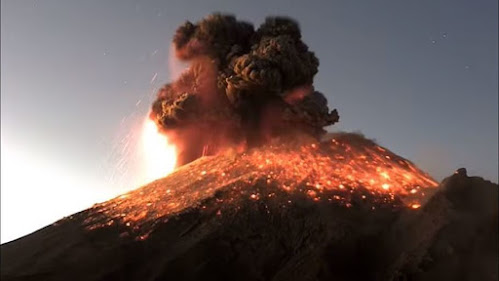TRISHIA MAREE CASTOLO ( SCIENCE 10 )
Wednesday, October 14, 2020
Activity 21 | SYNTHESIS
- The importance of having preparedness as soon as possible before the disasters to ensure safety and reduce damages and how it affects human lives and their properties. The ways and strategies on how to prevent injuries or loss in every possible disasters . Obviously, all answers are similar and mostly have in common to each other.
Activity 20 | Remembering the 1990 Luzon Earthquake
THE 1990 LUZON EARTHQUAKE
Tuesday, October 13, 2020
Activity 19 | Iceland Volcano on the Brink of Major Construction
Iceland Volcano on the Brink of Major Construction
1. How did the past eruption of Mount Hekla affect Iceland and Europe?
- The most famous and active volcano in Iceland is Mount Hekla, which has erupted 18 times since 1104, the last time in 2000. From a volcanological perspective, the activity at Hekla has made history, from its devastating effects on the agriculture to advancements in monitoring ash plumes. Activity at Hekla has always been destructive. A bluish haze from the eruption covered Europe and Iceland, causing difficulties in agriculture there.
2. How do the volcanoes of Iceland benefit this country?
- Volcanoes in Iceland provides geothermal energy. Over 90% of houses in Iceland are heated by natural geothermal heat. Apart from the beautiful scenery provided by Iceland's volcanic landscape that Icelanders use to attract tourists, Iceland is also one of the world's major users of geothermal electric power. The high levels of volcanism should also provide Iceland with fertile soils for growing crops as well.
3. How is Iceland preparing for another possible eruption?
- After a summer of increased seismic activity at Katla, Icelanders are obsessing over the smallest sign of an eruption at the country’s most closely watched volcano. Advanced technologies were used and tested to predict or traced future possible eruptions. Practising and testing emergency procedures are fundamental for ensuring effective responses in operational environments during real crises. Conducting realistic exercises provides a means to validate contingency plans.
Activity 18 | Mount Etna Erupts
MOUNT ETNA ERUPTS
- There were many records of attempting to save the city from erupting and some attempts were successful and some were not. Many residents risk their lives by ettempting to save the city and their livelihoods. At the time, the city of Catania had about 20,000 residents; most failed to flee the city immediately. Instead, Diego de Pappalardo, a resident of the city, led a team of 50 men to Mount Etna, where they attempted to divert the lava flow. Wearing cowhides soaked in water, the men bravely approached the lava with long iron rods, picks and shovels. They were able to hack open a hole in the hardened lava wall that had developed on the outside of the lava flow and much of the flow began to flow west out of the new hole. However, the residents of Paterno, a city lying southwest of Etna were monitoring these developments and quickly realized that this new flow direction could imperil their own city. They literally fought back the Catanians, while the lava breach hardened and filled again. Catania was not the only city affected—the eruption wiped out 14 towns and villages and left about 27,000 people homeless. Following this disaster, it was decreed that interference with the natural flow of lava was prohibited in Italy, a regulation that remained in effect hundreds of years later.
Monday, October 12, 2020
Activity 17 | The 1868 Arica Tsunami
THE 1868 ARICA TSUNAMI
Monday, October 5, 2020
ACTIVITY 15 | TECTONIC PLATE BOUNDARY MAP
ACTIVITY 14 | TYPES OF PLATE BOUNDARIES
TYPES OF PLATE BOUNDARIES
Activity 21 | SYNTHESIS
SYNTHESIS ESSENTIAL QUESTIONS : 1 . How should we prepare for disasters that include volcanic eruptions, earthquakes and tsunamis? SITUAT...

-
THE 1990 LUZON EARTHQUAKE 1. Why is the Philippines considered as the third most disaster-prone country in the world? - It is because the...
-
MOUNT ETNA ERUPTS 1. Why did people live on the slopes of Mount Etna? - Because of the fertile volcanic soils, more than 20 percent of...
-
Iceland Volcano on the Brink of Major Construction 1. How did the past eruption of Mount Hekla affect Iceland and Europe? - The most famo...































